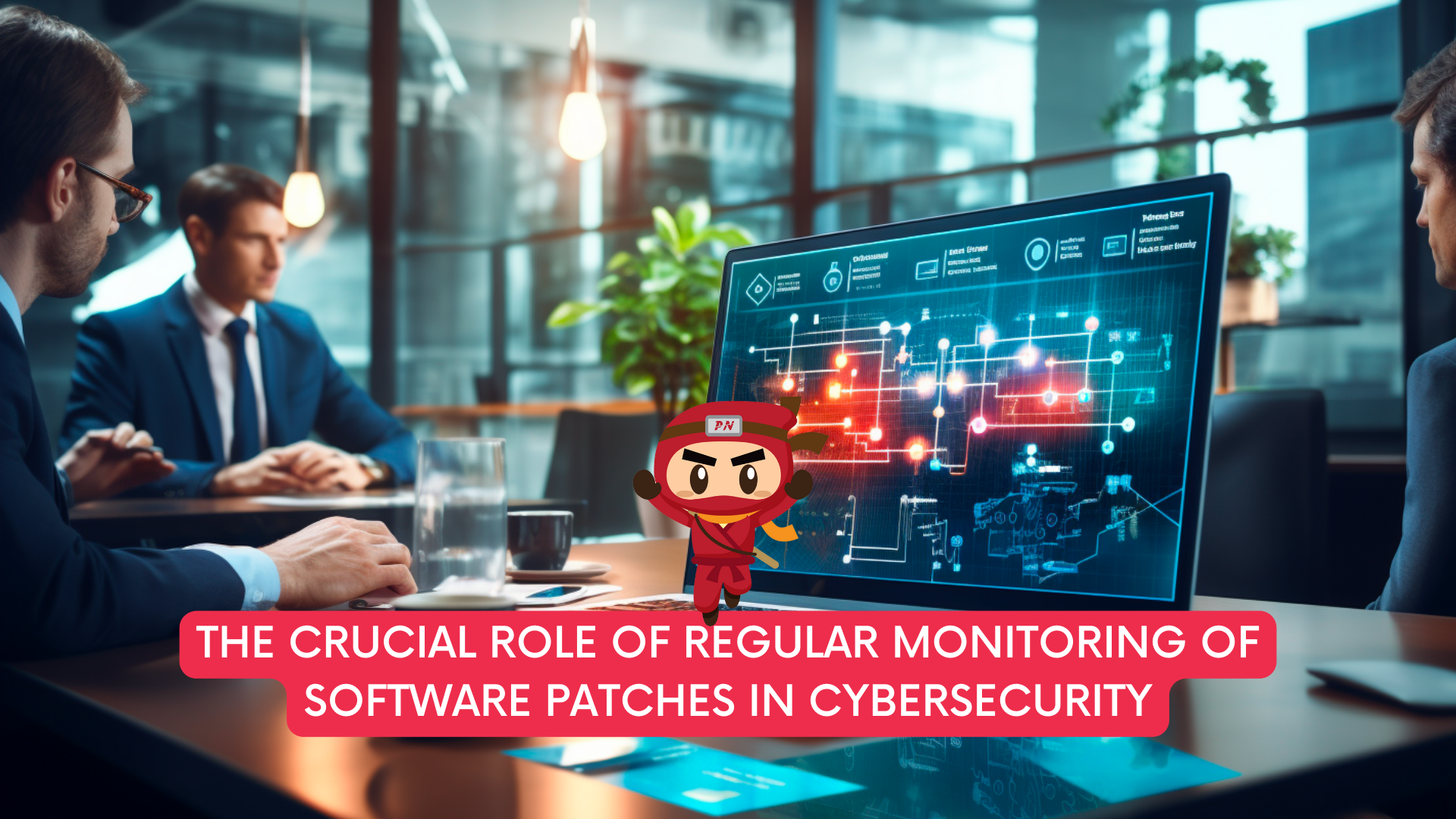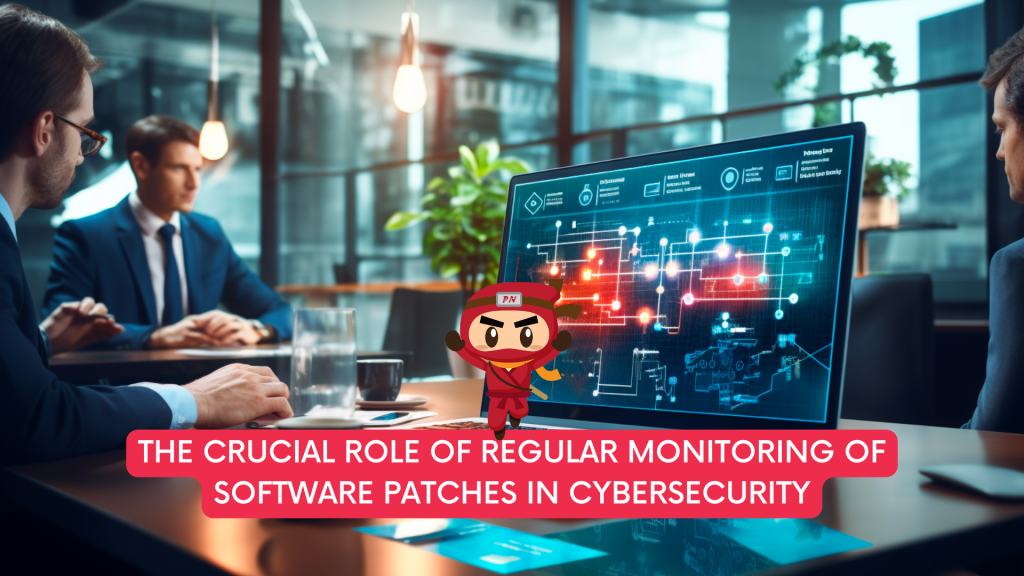KEEP IN TOUCH
Subscribe to our mailing list to get free tips on Data Protection and Cybersecurity updates weekly!







In the ever-expanding digital landscape, where technology advances at an unprecedented pace, cybersecurity stands as the frontline defense against evolving threats. Among the arsenal of strategies to fortify digital fortresses, the importance of regularly monitoring and applying available software patches cannot be overstated.
This article delves into the critical role of this practice in maintaining a robust cybersecurity posture, safeguarding against potential vulnerabilities that could be exploited by cyber adversaries.
The digital ecosystem is fraught with dynamic and sophisticated threats, ranging from ransomware attacks to data breaches. As cyber threats evolve, so must the defense mechanisms that protect sensitive information and critical infrastructure. Regular monitoring of software patches is a fundamental aspect of cybersecurity hygiene, providing organizations with a proactive means to address vulnerabilities before they are exploited.
Every piece of software, no matter how well-designed, is susceptible to vulnerabilities. These vulnerabilities are akin to open windows that cybercriminals can exploit to gain unauthorized access. The longer these windows remain open, the greater the risk of a security breach. Regular monitoring of software patches ensures that these vulnerabilities are identified and promptly closed, reducing the organization’s exposure to potential threats.

Software patches are released by developers for a reason – to fix identified security vulnerabilities and improve the overall functionality of the software. Failing to apply these patches promptly leaves systems exposed to known exploits that cyber adversaries actively seek to capitalize on. Regular monitoring and timely patching act as a robust defense, thwarting potential threats and preventing unauthorized access to sensitive data.
Many industries are subject to stringent regulatory requirements concerning data protection and cybersecurity. Regular monitoring and application of software patches play a pivotal role in compliance efforts. Failure to adhere to these regulations not only exposes organizations to legal consequences and fines but also jeopardizes the trust of customers and stakeholders. Keeping software up-to-date is a proactive step toward meeting regulatory standards.
Zero-day vulnerabilities are flaws in software that are unknown to the vendor and, consequently, lack a patch. While these vulnerabilities are challenging to predict and prevent, regular monitoring of software patches ensures that known vulnerabilities are addressed promptly. This proactive approach minimizes the risk of falling victim to exploits targeting unpatched software.
Cyber resilience is the ability to prepare for, respond to, and recover from cyber attacks. Regular monitoring and application of software patches are foundational elements in building cyber resilience. By staying ahead of potential threats and continuously fortifying defenses, organizations enhance their capacity to withstand and recover from cyber incidents, minimizing the overall impact on operations.
In the realm of regular software patch monitoring, a balanced approach involving both automated tools and human expertise is crucial. Automated tools can efficiently scan and identify available patches, but human oversight is necessary to assess the relevance and potential impact of each patch on specific systems. The synergy of automation and human intelligence ensures a comprehensive and informed approach to patch management.
Proactively monitoring and applying software patches is a cost-effective cybersecurity strategy. The financial implications of a data breach or a cyber attack far exceed the investment required for diligent patch management. Regularly updated software not only mitigates security risks but also contributes to the overall efficiency and performance of systems, reducing the likelihood of costly downtime.
In the dynamic landscape of cybersecurity, where the only constant is change, the importance of regular monitoring and application of software patches cannot be overstressed. It is a proactive and strategic approach that serves as a powerful deterrent against cyber threats, enhances compliance efforts, and fortifies an organization’s cyber resilience.
To navigate the complex and ever-evolving cybersecurity terrain, organizations must embrace a culture of continuous vigilance and proactive defense. Regular monitoring of software patches is not merely a best practice; it is a fundamental necessity for those who strive to stay one step ahead of cyber adversaries and safeguard the integrity, confidentiality, and availability of their digital assets. It is the guardianship that ensures the walls of cyber defenses remain formidable in the face of an ever-changing digital battleground.

Your appointed DPO can work with you on your PDPA compliance, ensuring that there will be policies in place to make sure that the handling of personal data is PDPA compliant.
A Data Protection Officer (DPO) oversees data protection responsibilities and ensures that organisations comply with the Personal Data Protection Act (PDPA). Furthermore, every Organisation’s DPO should be able to curb any instances of PDPA noncompliance as it is the officer responsible for maintaining the positive posture of an organisation’s cybersecurity.
DPOs complement organisations’ efforts to ensure that the organisation’s methods of collecting personal data comply with the PDPA. It also ensures that policies are set in place to make sure that there will be no instances of data breaches in the future.
Don’t wait any longer to ensure your organisation is PDPA compliant. Take our free 3-minute PDPA Compliance Self-audit checklist now, the same “secret weapon” used by our clients to keep them on track. Upon completion, we will send you the results so you can take the necessary action to protect your customers’ data. Complete the free assessment checklist today and take the first step towards protecting your customers’ personal data.